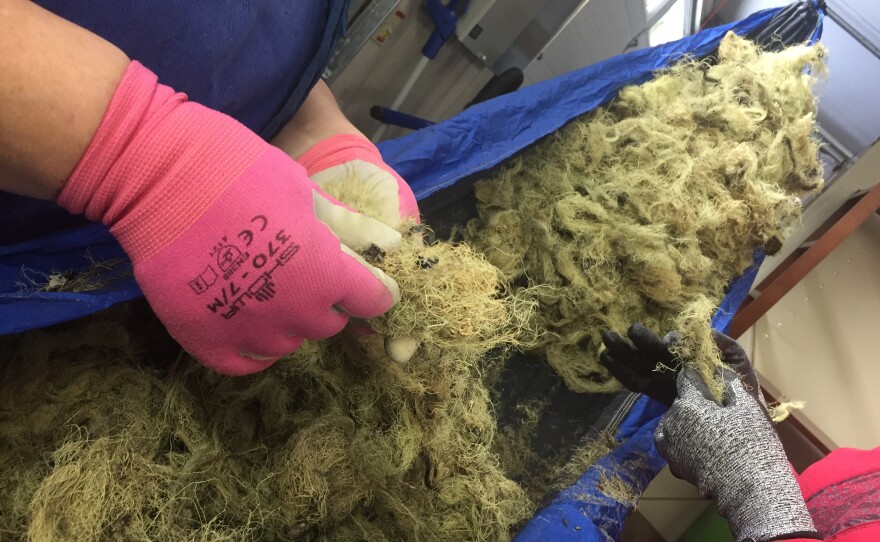The last herd of caribou found anywhere in the lower 48 states is in the Pacific Northwest. To be clear, this caribou herd is tiny.
“Today, these are the last 11 that occupy habitat in the Lower 48.”
Biologist Ray Entz directs the wildlife program for the Kalispel Indian tribe.
“So, once these are gone, it’s over for the United States,” he said.
The herd is called the South Selkirk Mountain caribou. They live in a mountain range that that stretches across the U.S.-Canada border into northeastern Washington and the Idaho panhandle.

In the winter, these animals head for the mountains and feast on lichen that hangs from tree branches.
Last fall, the Kalispels joined forces with other tribes, wildlife management agencies and conservation groups on both sides of the border to build an 18-acre maternity pen in British Columbia. That’s where between five and eight pregnant caribou will give birth this spring, away from the threat of predators.
The goal is to help the herd grow. The challenge is feeding those pregnant animals once they’re in the pen.
This winter, a group of biologists, tribal members and volunteers are trudging through forests in Idaho and Washington to collect lichen as part of a last-ditch effort to boost the herd’s numbers.
In the garage of Cheryl Moody’s north Idaho home, there’s a row of hammocks hanging from wall to wall. Moody is the executive director of the Selkirk Conservation Alliance.
The hammocks—the kind you’d normally hang between two trees and lounge in with a good book or a beer—are full of stringy, crunchy, dried out, bright, green lichen. It’s exactly the kind mountain caribou love to munch on.
It looks like pea green hair.
“Many people are familiar with this,” Moody said. “People mistake it for moss frequently, but as kids we called it ‘witches hair’ or ‘goat’s beard,’

Moody collected the lichen by hand along with other volunteers from tree branches for most of the last year.
“When we use the poles to pull the lichen down off the trees, we get a lot of small sticks, pine needles and other debris,” Moody said.
Lichen is high in protein and nutrients and readily available in the winter when other plants are not. And Ray Entz says pregnant caribou eat tons of it.
“I’s like 38 pounds per day per animal,” he said.
Lichen weighs virtually nothing and this crew has to gather between 150 and 250 pounds of the stuff, hang it, dry and clean it by early March.
“This 250 pounds of lichen is just to sustain those animals over that first 10 days, so they are weaned off of lichen and on to pelletized food,” Entz said. “And then as they are released, the snow melt makes available their regular diet of buds and leaves and things from shrubbery and forbs.”
This is the first year a maternity pen has been used to help the South Selkirk herd. Entz said they are “the most critically endangered mammal species in North America.” That’s why he and other volunteers are trying so hard to save them:
“I don’t care if we fail. If we try everything and anything to recover caribou and they don’t make it, I’m ok with that,” Entz said. “But if we just sit back and let them go, when we had an opportunity to interject and recover the species and we didn’t do it, I can’t live with that.”
If the caribou and their calves do well in the maternity pen this spring, wildlife managers could help boost the herds numbers in future years with caribou from Canada.
For now, people like Cheryl Moody will keep gathering and cleaning lichen, because the last caribou in the contiguous U.S. aren’t gone yet.


